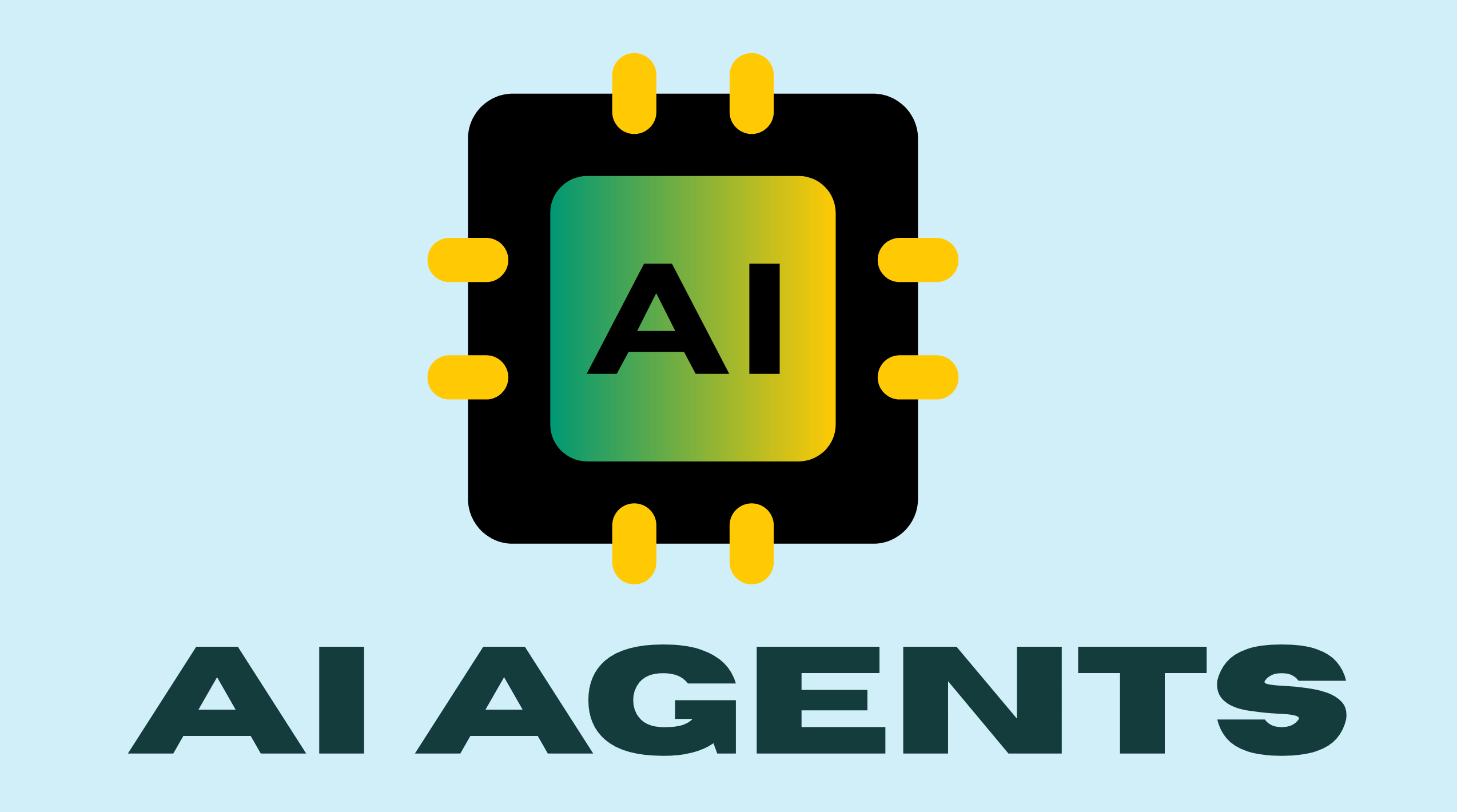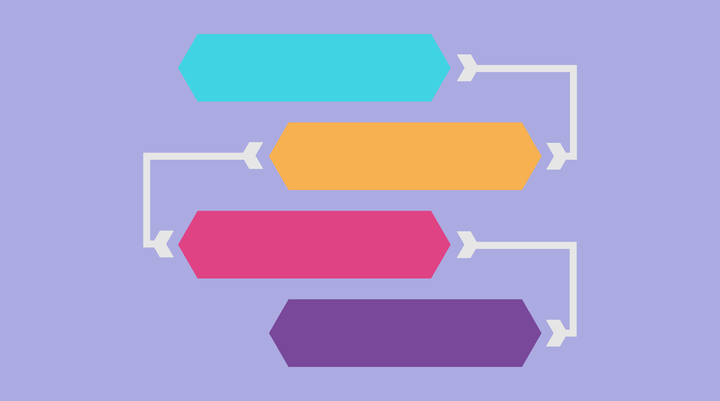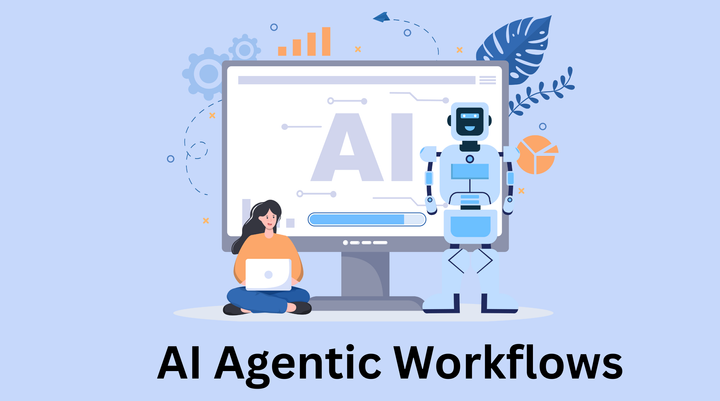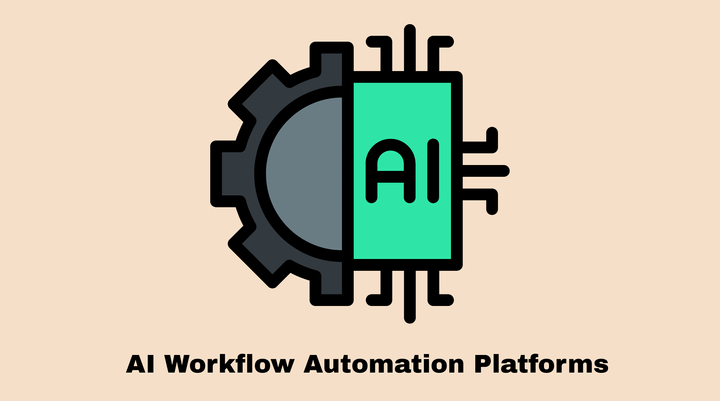AI Agents: An Introduction

When I first watched Interstellar, I was fascinated by TARS, the AI robot that worked alongside the astronauts. TARS was not just a machine—he had personality, made decisions, and even cracked a joke or two. I couldn't help but think, "Imagine if we had something like that in real life."
While we’re not quite living in a sci-fi world with AI like TARS, the reality of AI agents is much closer than you think. Today, AI agents are revolutionizing the way we work. These intelligent agents go beyond the simple back-and-forth of chatbots; they can reason through problems, take actions on your behalf, and complete tasks that would normally require multiple steps and tools.
While AI agents like Siri and Alexa have been around for years, recent advancements in large language models (LLMs) have unlocked new potential for these agents to be even more capable and user-friendly.
Today, even non-developers can tap into the power of AI to manage the complexities of everyday life—from organizing schedules to making purchases.
Table of contents :
What are AI Agents?
Characteristics of AI Agents
Core components of AI Agents
Types of AI Agents
How AI Agents functions?
How AI Agents Differ from Simple Automation
When to Use AI Agents (and When Not To)
Application area
The Rise of AI Agents: What’s Next?
What are AI Agents?
An AI agent is a system that can sense its environment, process the information it collects, and take actions to achieve specific goals.
Think of it as a digital entity that can observe, decide, and act—similar to how humans interact with the world, but in a programmed and goal-driven way.
The key idea behind AI agents is that they behave rationally, meaning they take actions that help them achieve their goals. This makes them different from simple programs, which just respond to inputs without thinking or making decisions based on a larger goal.
To put it simply, consider a thermostat in a home :
The thermostat perceives the environment (temperature), makes a decision (whether the temperature is too high or too low), and takes action (adjusting the heating or cooling) to reach the desired goal.
Apart from it you see many examples of AI agents in real life like self driving cars, drones, automatic cleaning system and more.
These agents sense the surroundings, collect information, process it, and perform tasks to accomplish specific goals.
Today, AI agents are also running on your computer, automating tasks like sorting emails, organizing data, and making decisions based on the information they collect.
Even you can build your own AI agents by using the tools like viaSocket and 50Agents without writing even single line of code.
Characteristics of AI Agents
AI agents possess several key characteristics:
- Autonomy: AI agents can perform tasks and make decisions without constant human input.
- Perception: They can sense and gather information from their environment to make informed decisions.
- Rationality: AI agents act in ways that maximize their chances of achieving a defined goal or objective.
- Adaptability: They can adjust their actions based on changing conditions and feedback.
- Learning: AI agents can improve over time by learning from their mistakes or experiences.
- Goal-Oriented: They are designed to pursue specific objectives or goals and take actions to achieve them.
- Flexibility: Unlike traditional programs, AI agents can handle complex and unpredictable tasks.
- Interactivity: AI agents can communicate and interact with their environment, users, or other systems as needed.
Core components of AI Agents
At its core, an AI agent is made up of the following components:
- Perception:
• The ability to gather data or "sense" the environment through sensors or inputs (e.g., cameras, microphones, APIs, etc.).
• Example: A self-driving car uses cameras and sensors to detect road conditions, obstacles, and traffic signals. - Reasoning/Decision-Making:
• The system's ability to process the data it perceives, analyze it, and make decisions based on predefined goals, rules, or learned patterns.
• Example: An AI agent in a chatbot processes user queries and determines the most appropriate response. - Action/Execution:
• The ability to take actions based on the decisions made, influencing the environment to achieve the desired goals. This is often done through actuators or commands.
• Example: A thermostat adjusts the heating or cooling systems in response to changes in temperature. - Learning:
• The ability to improve and adapt over time by learning from experiences, feedback, or new data.
• Example: A recommendation system, like those used by Netflix or Amazon, learns from user behavior and adjusts its suggestions accordingly. - Goal-Oriented Behavior:
• AI agents are designed to pursue specific objectives or goals, and their actions are directed toward achieving those goals.
• Example: A self-driving car's goal is to safely transport passengers from one point to another. - Autonomy:
• The ability to operate independently, without constant human intervention, once set with an objective.
• Example: An email filtering system automatically sorts incoming messages into different folders without needing constant input. - Interaction:
• The capability of the agent to communicate or interact with its environment, users, or other systems to exchange information or adjust its actions.
• Example: A voice assistant interacts with users to perform tasks like setting reminders or sending messages.
Types of AI Agents
AI agents can be categorized into several types based on their complexity, functionality, and the way they interact with their environment. Here are the main types:
- Simple Reflex Agents:
• These agents operate based on pre-defined rules and respond to specific stimuli in the environment. They don’t consider past states or learn from experiences.
• Example: A thermostat that adjusts the temperature based on predefined thresholds. - Model-Based Reflex Agents:
• These agents maintain an internal state (model) of the environment and can respond based on that model. They use past information to make better decisions.
• Example: A simple self-driving car that uses a map of the area and real-time sensor data to make driving decisions. - Goal-Based Agents:
• These agents can set specific goals and plan actions to achieve them. They evaluate the outcomes of different actions to choose the one that best accomplishes their goals.
• Example: A navigation app that plans the best route to reach a destination based on real-time traffic data. - Utility-Based Agents:
• These agents use a utility function to evaluate the desirability of different actions. They aim to maximize their overall performance or "utility" while achieving goals.
• Example: A recommendation system that suggests movies based on your preferences and viewing history, optimizing for the best possible experience. - Learning Agents:
• These agents improve their performance over time by learning from experiences and feedback. They adapt to changes in the environment and refine their strategies.
• Example: A chess-playing AI that learns from its mistakes and improves its strategy with each game. - Hybrid Agents:
• These agents combine multiple types of AI behaviors (e.g., reactive and deliberative) to enhance decision-making in complex environments.
• A robot used in manufacturing that reacts to immediate environmental changes (like obstacles) but also plans long-term actions (like picking up parts).
Each type of AI agent is suited for specific tasks, depending on the complexity of the environment and the level of autonomy required.
How AI Agents functions?
Think about your music app not just playing your favorite songs, but also recommending new artists you might like based on your listening habits. Convenient, or a little too personal? That’s the role of AI agents.
AI agents are systems that can understand human language, reason through information, plan actions, and execute tasks—all without needing constant human input.
They're designed to tackle complex problems and offer advanced interactions, making them far more capable than basic automation tools. Unlike simple scripts or automation tasks, AI agents are integrated into software systems, enabling sophisticated behavior that can adapt to dynamic environments.
AI Agent Architecture
Here’s a breakdown of how an AI agent functions, from receiving a query to taking action:
1. Orchestration Layer (The Control Center)
This is the heart of the AI agent, responsible for handling queries and directing its actions. If you ask an AI agent to schedule a webinar, the orchestration layer processes the query and sets things in motion. The orchestration layer has four main functions:
- Memory: Stores the history of interactions with the user.
- State: Tracks the current status of the ongoing process.
- Reasoning: Guides the agent’s decision-making based on the data.
- Planning: Breaks down the tasks and decides on the next steps.
The orchestration layer then interacts with the model to decide how to proceed.
2. Models (The Brain)
The model is the central decision-maker for the AI agent, typically based on an AI model like a Large Language Model (LLM). It’s responsible for:
- Understanding the Query: It processes and comprehends the user’s input.
- Reasoning: The model uses reasoning frameworks (like ReAct, Chain-of-Thought, or Tree-of-Thoughts) to figure out the best action to take.
- Formulating a Plan: It decides the next actions and how to achieve the goal.
3. Tools (The Hands)
AI agents use external tools to interact with the world and complete tasks. These tools extend the agent’s capabilities beyond its internal logic. Examples include:
- Calculator: Solving complex math problems.
- APIs: Fetching data from external services.
- Web Search: Accessing real-time information.
- External Databases: Retrieving detailed records or information.
These tools enable the agent to perform tasks that require real-time data, interact with external systems, or complete complex actions beyond its internal capabilities.
In Summary: How AI Agents Work
- Orchestration Layer: Handles the query, manages memory, tracks progress, and plans the next steps.
- Model: Uses reasoning to decide the best actions and plans to take.
- Tools: Interacts with the external world to perform tasks beyond the model's intrinsic capabilities.
Through this integrated architecture, AI agents can function autonomously, adapt to dynamic conditions, and take meaningful actions toward achieving their goals—making them much more than simple automation.
How AI Agents differ from simple automation
AI agents are distinct from basic automation tools due to two key capabilities: tools and planning.
- Tools: While basic automation can execute predefined tasks, AI agents can leverage external tools.
For instance, when solving a math problem, you might use a calculator if you don't know the answer offhand. Similarly, AI agents access tools like APIs or databases to perform tasks that go beyond their internal capabilities. - Planning: AI agents can plan their actions based on context. Just like when you solve a math problem, you plan by deciding how to approach the calculation, which tool (calculator) to use, and what parameters (the numbers) to input.
AI agents similarly plan the steps necessary to complete complex tasks.
When to use AI Agents (and when not to)
Imagine you're building a food delivery app. For the most part, users will either want to browse menus or place an order. For these straightforward tasks, you can use a simple workflow:
- Browse Menu → Display the menu with food options.
- Place Order → Let the user select their items and proceed to payment.
This is a simple, predictable flow. If the majority of requests fit into this pattern, you can easily implement it with traditional programming. It’s a deterministic workflow, meaning it works well for tasks with clear, predefined steps. There’s no need for an AI agent here, as the process is straightforward and easy to manage.
But what if a user asks something more complex? For example, they might say: "I have dietary restrictions, and I want to order a vegan meal that’s gluten-free. Also, I need it delivered by 6 p.m. because I have a meeting at 6:30 p.m. Can you make sure the food is fresh and arrive on time?" This request involves several layers of complexity:
- Dietary restrictions: The app needs to filter the menu for vegan and gluten-free options.
- Delivery time: It must check the estimated delivery time to ensure it can meet the 6 p.m. requirement.
- Food freshness: It must ensure the restaurant can guarantee fresh food for the specific delivery time.
This is a much more complicated task, and it’s hard to anticipate all the possible scenarios in advance. A traditional workflow won’t cut it here.
AI Agents to the Rescue
This is where an AI agent shines. Instead of relying on a simple, fixed workflow, the AI agent can:
- Filter the menu based on the user's dietary preferences, accessing real-time restaurant data.
- Check delivery logistics to ensure the order will arrive on time.
- Verify food quality by cross-referencing user reviews and restaurant performance data.
- Communicate with the restaurant to make sure the meal is prepared to meet the specific dietary needs and freshness.
The AI agent can handle this multi-step process, adapting in real-time to ensure the best solution is provided based on the user's request.
When to Avoid AI Agents
However, if your app’s primary tasks are straightforward—like browsing menus or placing orders—then using AI agents would be an unnecessary complexity. A simple, deterministic workflow is sufficient. It’s faster, more reliable, and less likely to introduce errors.
In short, AI agents are best for tasks that require flexibility and dynamic decision-making. If the problem is well-defined and doesn't change based on external factors, traditional workflows are more efficient.
But when the task is complex, involves multiple conditions, or requires real-time adjustments, AI agents are a perfect solution.
Application area
AI agents are like super-powered assistants that are changing the game across industries. Here’s how they’re showing up in different areas:
- Customer Service: Imagine never waiting in line again. AI chatbots are always ready to help with your questions, 24/7.
- Healthcare: From diagnosing diseases to giving personalized health advice, AI is like having a doctor in your pocket.
- E-Commerce: Your shopping buddy who always knows what you want, recommending products and tracking inventory for you.
- Finance: Think of an AI accountant who detects fraud, gives investment advice, and crunches numbers without breaking a sweat.
- Smart Homes: Your house that gets you—adjusting the temperature, lighting, and even locking doors when you forget.
- Transportation: Self-driving cars, smart delivery systems, and optimized routes—AI is making travel smarter and faster.
- Education: Your AI tutor, personalizing lessons, grading homework, and keeping track of your progress, no extra effort required.
- Manufacturing: AI agents that predict when machines will break down and keep production rolling smoothly.
- Entertainment: A personal DJ or movie critic, suggesting your next binge-watch or favorite song without missing a beat.
- Human Resources: An AI hiring manager that sorts resumes, schedules interviews, and tracks employee progress, all with no coffee breaks.
- Gaming: AI NPCs that adapt to your playstyle, making every game feel fresh and exciting.
- Legal: AI assistants that speed through legal documents, research, and compliance checks, helping lawyers do more in less time.
AI agents are like having a team of virtual helpers at your service, making everything smarter, faster, and more efficient—all while you sit back and relax!
The rise of AI Agents: What's next?
AI agents are rapidly changing how we live and work. While commercial AI platforms are still evolving, they’ll soon offer powerful capabilities—though hopefully without the creepy villain laugh.
As for artificial general intelligence (AGI), it’s still unclear how or when it will happen. Whether as a single AI or a network of agents, one thing is certain: AI is improving fast. If machines ever surpass human intelligence, we might need to rethink what it means to be human.



